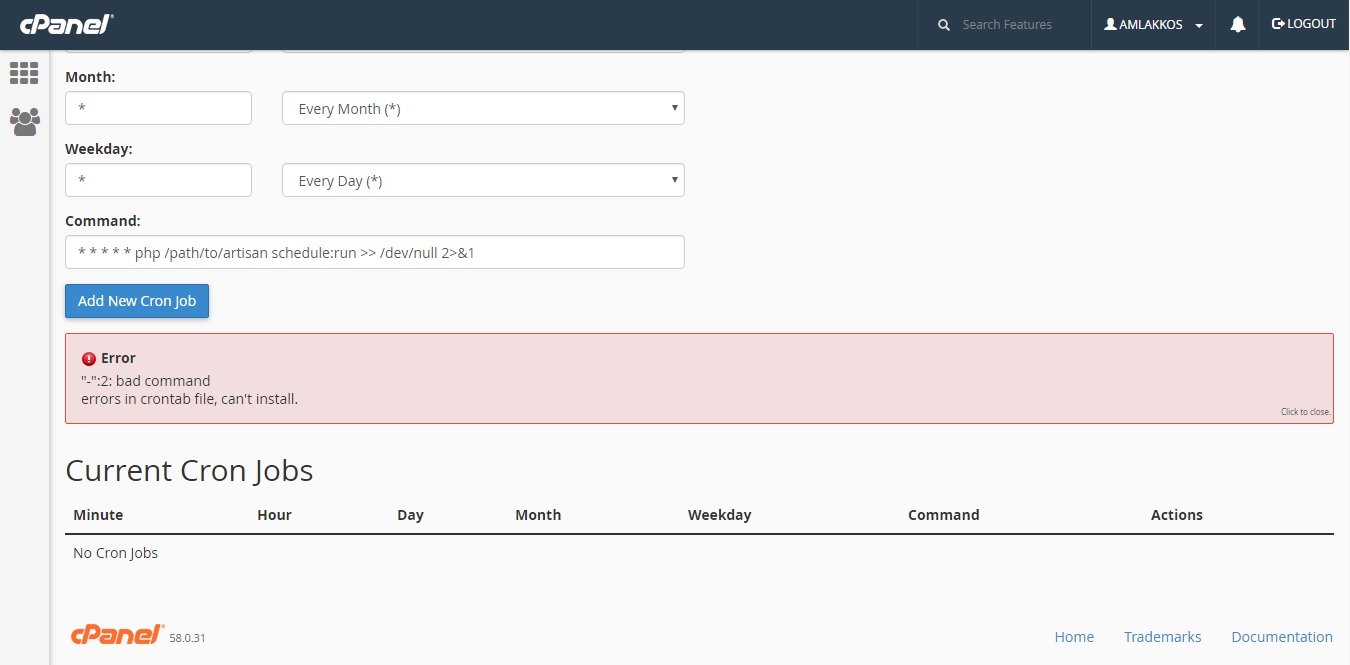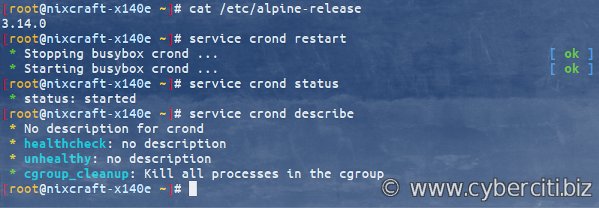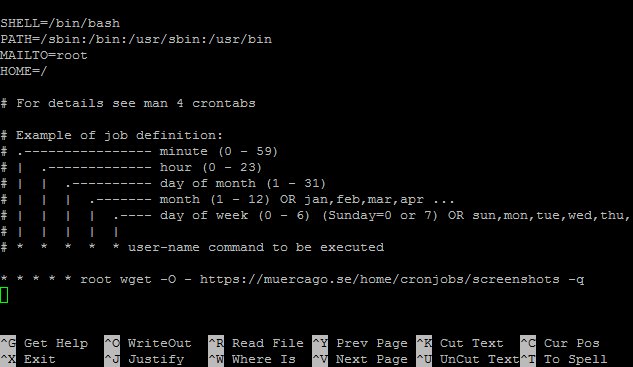Looking for a powerful tool to schedule tasks on your Linux system? Look no further! Enter sudo crontab, your go-to command for automating tasks effortlessly. With sudo crontab, you can schedule scripts, commands, or programs to run at specific times, making your life as a Linux user a whole lot easier. In this article, we will dive into the world of sudo crontab, explore its functionalities, and learn how to make the most of this incredible utility. So, let’s get started and unlock the full potential of sudo crontab!
sudo crontab: A Comprehensive Guide to Automation and Scheduling Tasks
Introduction
Automation plays a vital role in today’s fast-paced digital world. Whether you’re a system administrator, a developer, or simply a power user, finding efficient ways to automate recurring tasks can save you time and effort. One powerful tool for automation in Linux environments is the `sudo crontab`, which allows users to schedule tasks at predetermined intervals. In this comprehensive guide, we’ll explore everything you need to know about `sudo crontab`, from its basic usage to advanced scheduling techniques.
Table of Contents
- Understanding sudo crontab
- Getting Started with sudo crontab
- Common sudo crontab Commands
- Advanced Scheduling Techniques
- Troubleshooting sudo crontab
Understanding sudo crontab
Linux systems rely on the crontab (cron table) to schedule recurring tasks. The `sudo crontab` command allows users with administrative privileges to manage the system-wide crontab, enabling them to schedule tasks that run under the root user.
Crontab entries consist of six fields that define when and how often a task should run. These fields, in order, represent the minute, hour, day of the month, month, day of the week, and the command to be executed. By leveraging the power of sudo, `sudo crontab` extends this functionality to system administrators and power users who need to automate tasks requiring elevated privileges.
Advantages of sudo crontab
Using `sudo crontab` offers several advantages for automating tasks in a Linux environment:
- Root-level Access: With the ability to run commands as the root user, `sudo crontab` grants users elevated privileges, allowing them to execute tasks that require administrative access.
- Centralized Management: System-wide crontab entries managed by `sudo crontab` provide a unified interface for scheduling tasks across the entire system.
- Efficient Task Execution: By executing tasks at predetermined intervals, `sudo crontab` ensures that critical processes and routine maintenance tasks are performed consistently, without human intervention.
- Flexibility: The syntax and features of `sudo crontab` are highly flexible, enabling users to create complex schedules and automate a wide range of tasks.
Getting Started with sudo crontab
To begin using `sudo crontab`, you need administrative privileges on the Linux system. Follow these steps to get started:
- Open a terminal or SSH session.
- Assuming you have administrative privileges, type the following command to edit the system-wide crontab file:
“`
sudo crontab -e
“`
This command will open the crontab file in the default text editor specified by the `EDITOR` environment variable.
Configuring sudo crontab
The crontab file follows a specific syntax for scheduling tasks. Each line in the file represents a separate task entry. Here’s an example of a simple crontab entry:
“`
* * * * * command_to_be_executed
“`
Let’s break down the fields in the above example:
- Minute (0-59): Specifies the minute of the hour when the task should run.
- Hour (0-23): Denotes the hour of the day when the task should run.
- Day of the Month (1-31): Indicates the day of the month when the task should run.
- Month (1-12): Specifies the month of the year when the task should run.
- Day of the Week (0-7): Represents the day of the week when the task should run (both 0 and 7 represent Sunday).
- Command to be Executed: The actual command or script to be executed at the specified time.
It’s important to note that each field can be a specific value, a range of values, or an asterisk (*) to indicate all possible values. Additionally, you can use special characters like commas (,) and slashes (/) to further refine the schedule.
Common sudo crontab Commands
Now that we understand the basics, let’s explore some common `sudo crontab` commands and their usage:
Viewing the sudo crontab
To view the current system-wide crontab managed by `sudo crontab`, use the following command:
“`
sudo crontab -l
“`
This command lists all the scheduled tasks in the crontab file.
Editing the sudo crontab
As mentioned earlier, the `sudo crontab -e` command allows you to edit the crontab file. This command opens the file in the default text editor, allowing you to add, modify, or remove existing tasks.
After modifying the crontab file, save the changes and exit the editor. The new crontab will be automatically installed and activated.
Removing the sudo crontab
To remove all scheduled tasks from the system-wide crontab, use the following command:
“`
sudo crontab -r
“`
This command removes all entries in the crontab file, effectively disabling all scheduled tasks.
List user-specific crontabs
In addition to managing the system-wide crontab, `sudo crontab` also allows administrators to view and manage crontabs for individual users. To list the crontab entries for a specific user, use the following command:
“`
sudo crontab -u username -l
“`
Replace `username` with the name of the user for whom you want to list the crontab entries.
Advanced Scheduling Techniques
While basic scheduling with `sudo crontab` is straightforward, advanced techniques can enhance its capabilities. Let’s explore some techniques to make the most out of `sudo crontab`:
Redirecting Output
By default, the output of commands executed through `sudo crontab` is sent via email to the owner of the crontab entry. However, you can redirect this output to a file by appending the following at the end of your command:
“`
> /path/to/output_file
“`
This will redirect the output to the specified file instead of sending it via email.
Running Scripts
Instead of executing a single command, you can also run shell scripts or other executable files through `sudo crontab`. Simply provide the path to the script in the command field of the crontab entry. For example:
“`
* * * * * /path/to/script.sh
“`
Make sure the script file has the necessary execute permissions.
System Reboot Tasks
`sudo crontab` can also be used to schedule tasks that run immediately after a system reboot. To achieve this, use the special `@reboot` keyword followed by the command. For example:
“`
@reboot /path/to/command
“`
This is particularly useful for starting services or performing system initialization tasks after a reboot.
Combining Multiple Schedules
With `sudo crontab`, you can combine multiple schedules within a single crontab entry by separating them with commas. For example:
“`
0 8,14 * * * command
“`
The above entry will execute the command at 8:00 AM and 2:00 PM every day.
Troubleshooting sudo crontab
Checking Logs
If you encounter issues with `sudo crontab` tasks not executing as expected, it’s helpful to check the system logs for any error messages or relevant information. The logs can usually be found in the `/var/log` directory, with the `syslog` and `cron` files being the most relevant ones. Use the following command to view the logs:
“`
tail -f /var/log/syslog
“`
This command displays the last few lines of the syslog file, allowing you to monitor it in real-time.
Verify the crontab Syntax
Incorrect syntax in the crontab file can prevent tasks from running correctly. To ensure your crontab entries are valid, you can use online crontab syntax validators or check the syntax against examples and guides.
In conclusion, `sudo crontab` is a powerful tool for automating tasks in Linux systems. By leveraging the elevated privileges provided by sudo, users can schedule tasks that require administrative access, streamlining routine maintenance and saving time. Understanding the syntax, common commands, and advanced techniques of `sudo crontab` empowers users to unlock the full potential of automation in their Linux environments.
FAQs
Here are some frequently asked questions regarding `sudo crontab`:
Q1: Can I use `sudo crontab` to schedule tasks for specific users?
Yes, `sudo crontab` allows administrators to manage crontabs for individual users as well. By using the `-u` option followed by the username, you can view and modify the crontab entries for that specific user.
Q2: Can I schedule tasks to run at intervals shorter than a minute?
No, the finest granularity for scheduling tasks with crontab is one minute. If you require sub-minute intervals, you may need to explore alternative solutions like using background daemons or custom scripts.
Q3: How do I check if a `sudo crontab` task executed successfully?
By default, the output of a `sudo crontab` task is sent to the owner of the crontab entry via email. If the task produces no output, it indicates successful execution. To redirect the output to a file for monitoring, refer to the “Redirecting Output” section discussed earlier.
Remember that successful execution does not necessarily mean the task achieved the intended result. Checking the logs and verifying the outcomes of the task are crucial for ensuring its success.
Note: This article is for educational purposes only and assumes that you have appropriate permissions to use `sudo crontab` on your Linux system. Always exercise caution when managing crontab entries, as misconfiguration can lead to unintended consequences or system instability.
How to schedule a Cron Job to run a script on Ubuntu 16.04
Frequently Asked Questions
What is sudo crontab?
Sudo crontab is a command that allows authorized users to edit and manage the system-wide crontab file. It provides a way to schedule and automate tasks at specific times or intervals on a Unix/Linux system.
How do I edit the sudo crontab file?
To edit the sudo crontab file, you can use the command “sudo crontab -e”. This will open the crontab file in the default text editor specified in your system. Make the necessary changes, save the file, and exit the editor to apply the new cron job.
Can I view the existing sudo crontab entries?
Yes, you can view the existing sudo crontab entries by running the command “sudo crontab -l”. This will display the current cron jobs configured in the system-wide crontab file.
What is the format of a sudo crontab entry?
A sudo crontab entry consists of six fields separated by spaces or tabs. The fields represent the minute, hour, day of the month, month, day of the week, and the command to be executed. For example, the entry “* * * * * command” represents a command that runs every minute.
How can I schedule a task to run at a specific time using sudo crontab?
To schedule a task to run at a specific time, you need to specify the desired time in the minute and hour fields of the sudo crontab entry. For example, to run a command every day at 9:30 AM, you would use the entry “30 9 * * * command”.
Can I redirect the output of a sudo crontab command to a file?
Yes, you can redirect the output of a sudo crontab command to a file by appending “>>” or “>” followed by the file path to the end of the command. For example, “command >> /path/to/file.log” will append the output to the specified file, while “command > /path/to/file.log” will overwrite the file with the output of the command.
Final Thoughts
In conclusion, the ‘sudo crontab’ command is a powerful tool for managing scheduled tasks in Linux. With ‘sudo crontab’, users can easily create, edit, and delete cron jobs with elevated privileges. This command allows for the automation of various system tasks, such as backups and updates, providing convenience and efficiency. Additionally, ‘sudo crontab’ ensures that these tasks are executed with the necessary permissions, making it an essential tool for system administrators and power users. Whether you need to schedule routine tasks or automate critical processes, ‘sudo crontab’ is a must-have command in your Linux toolkit.




